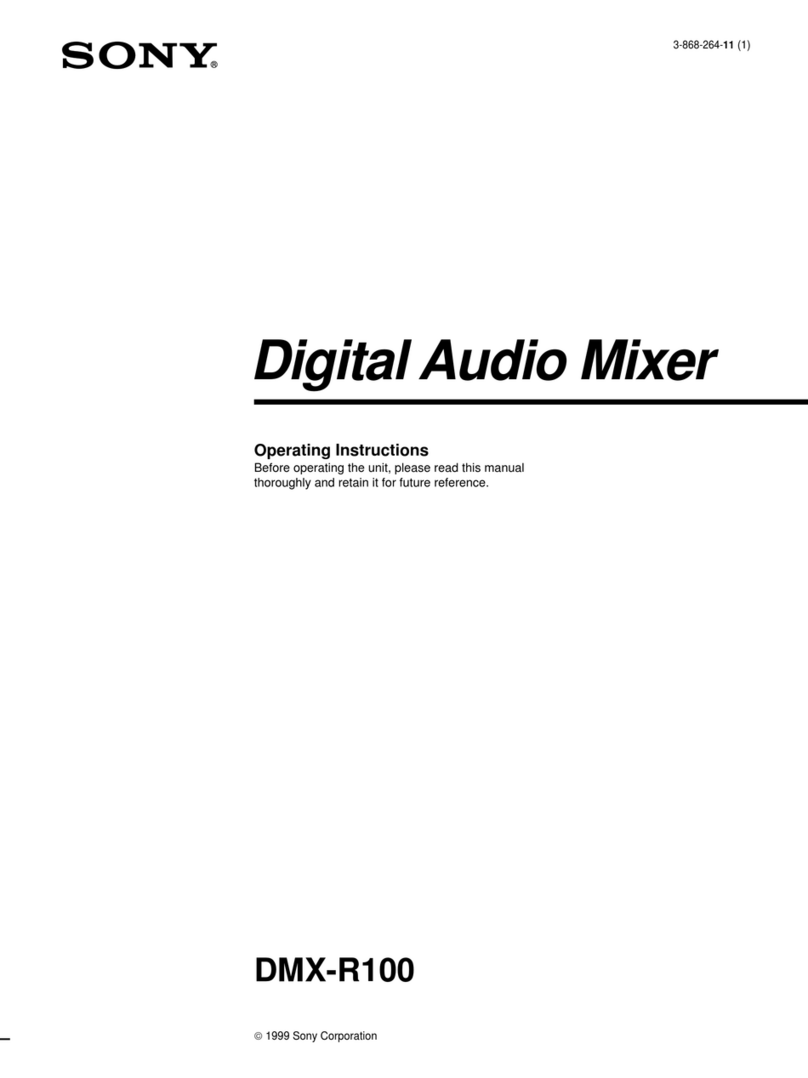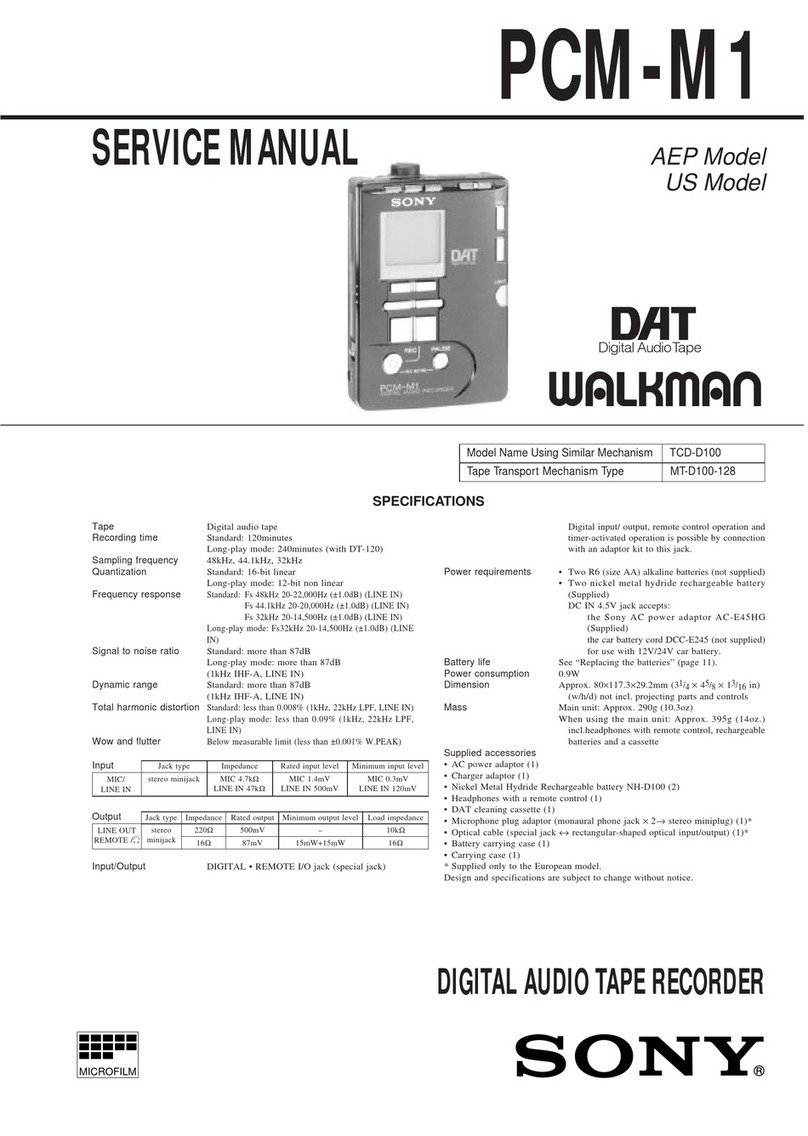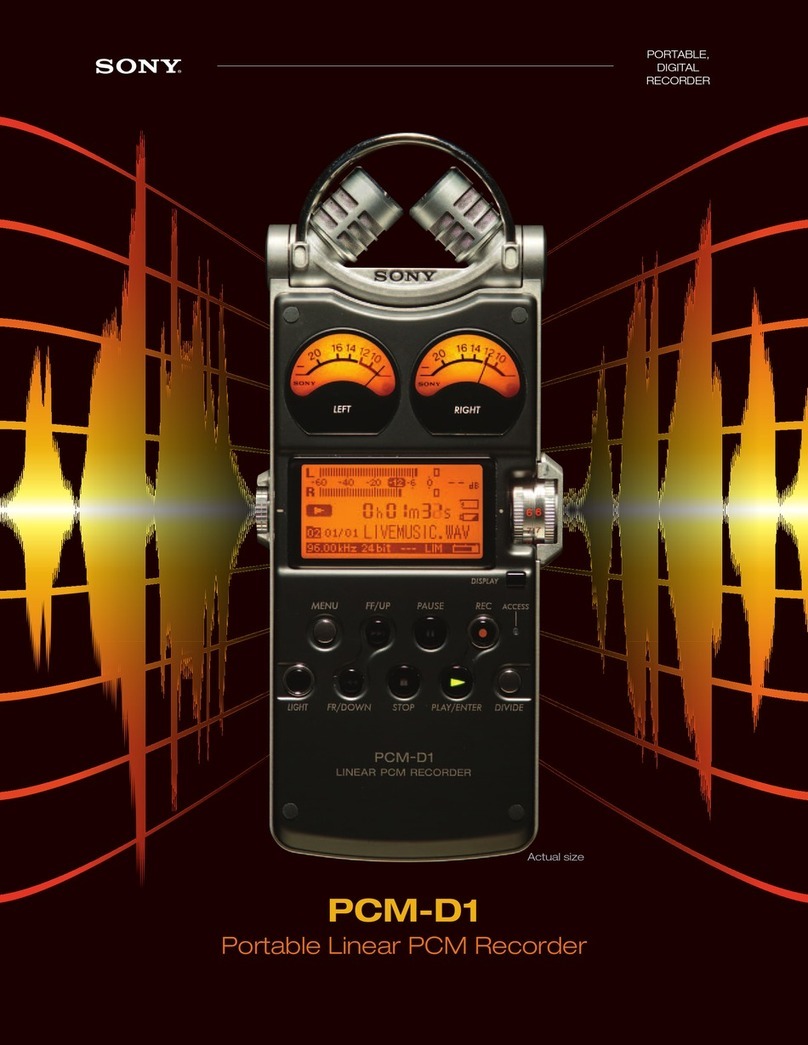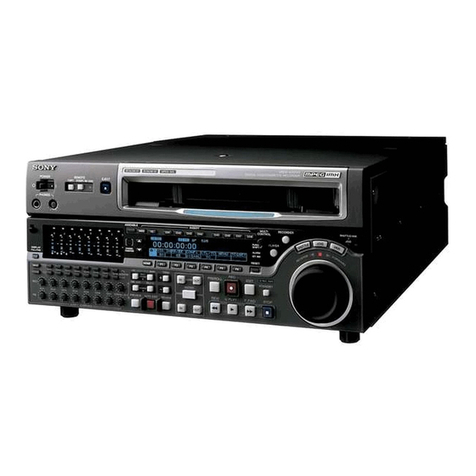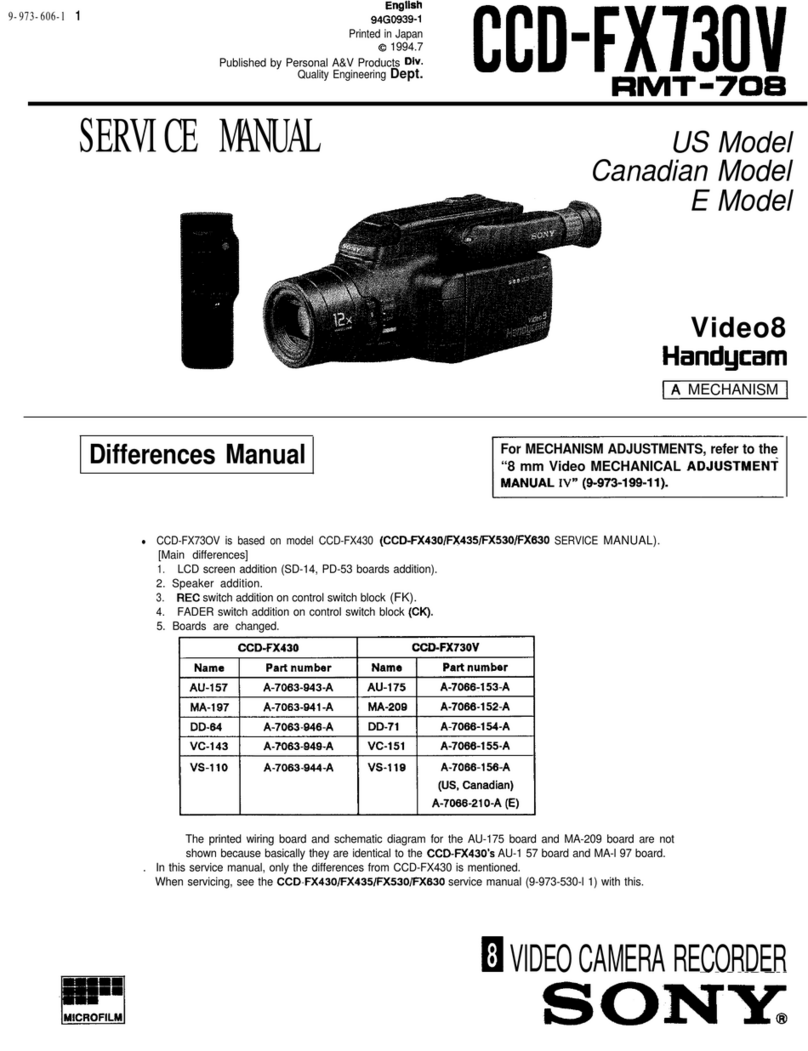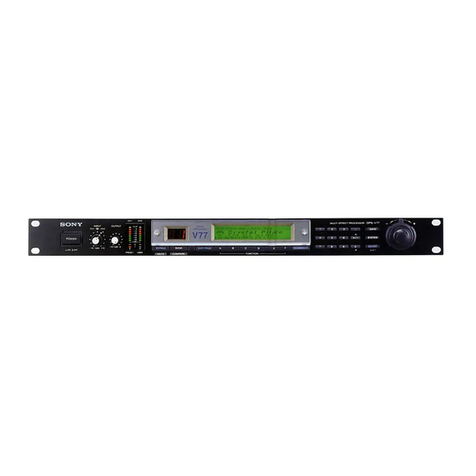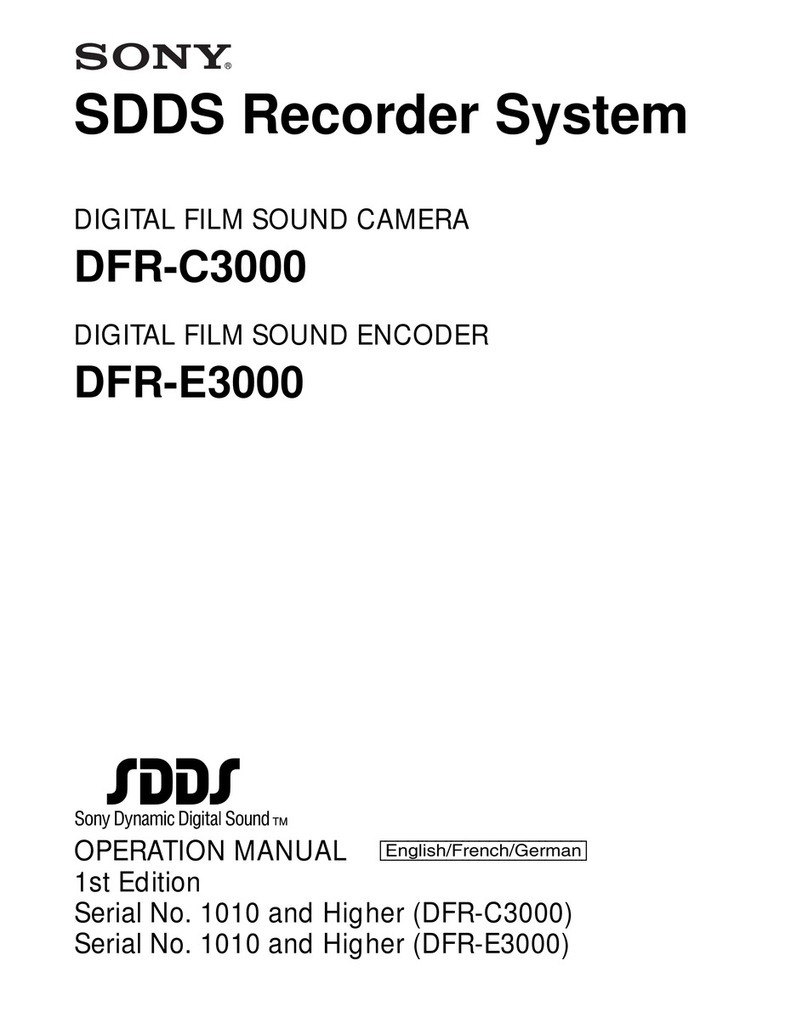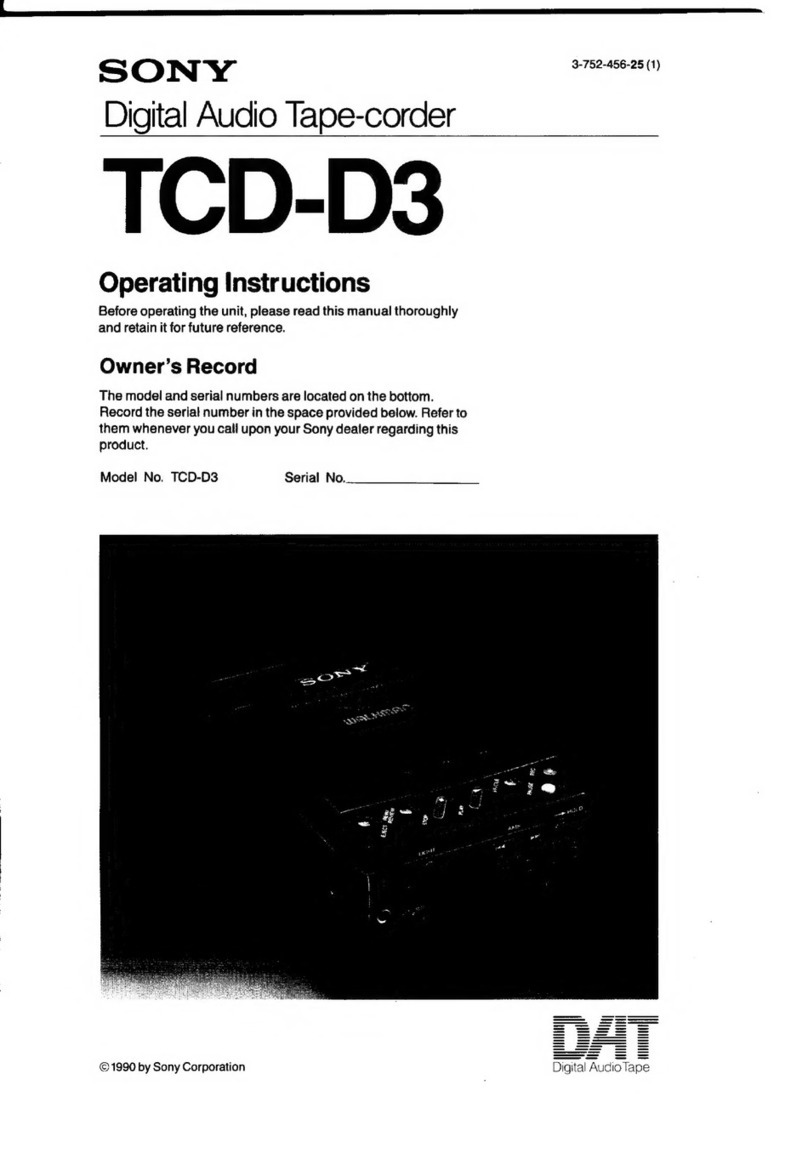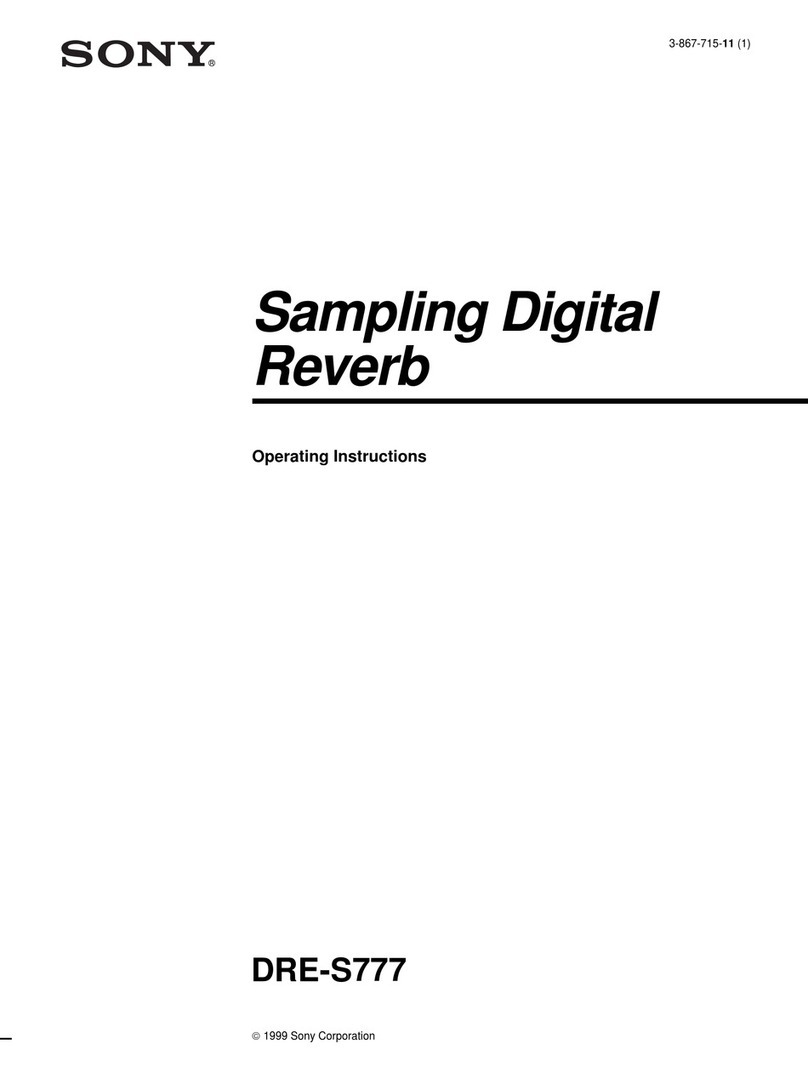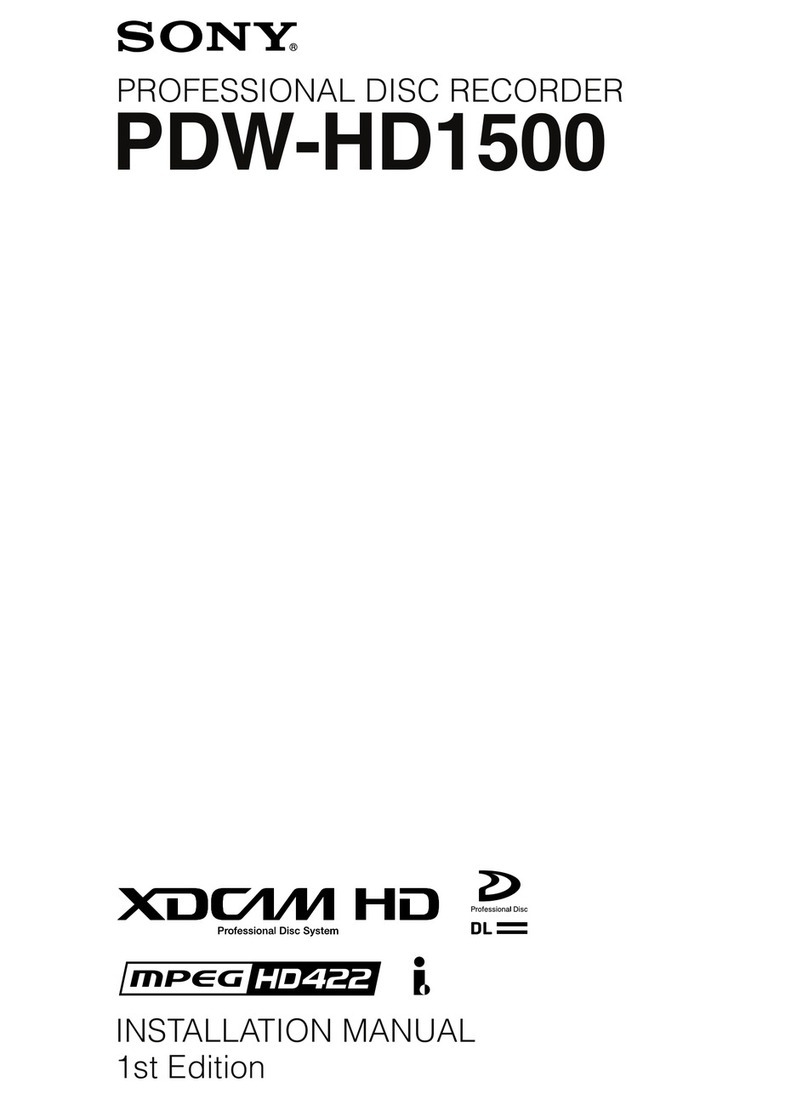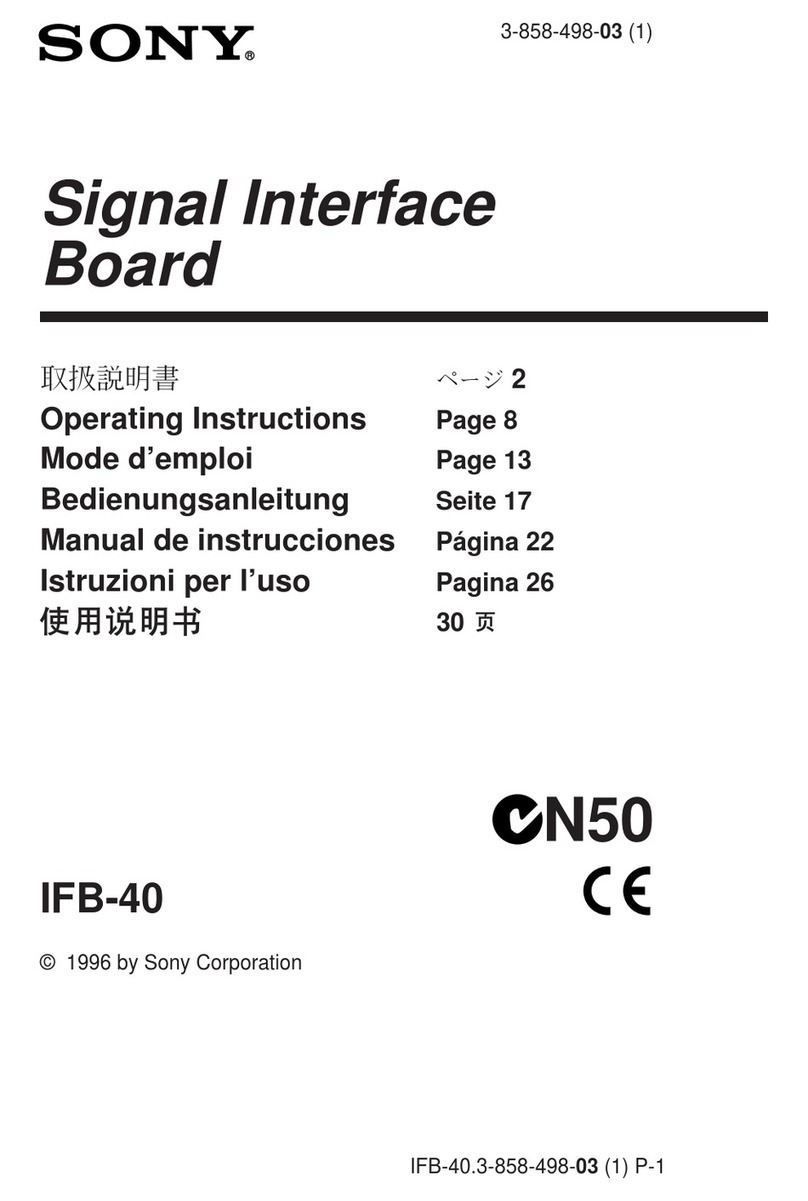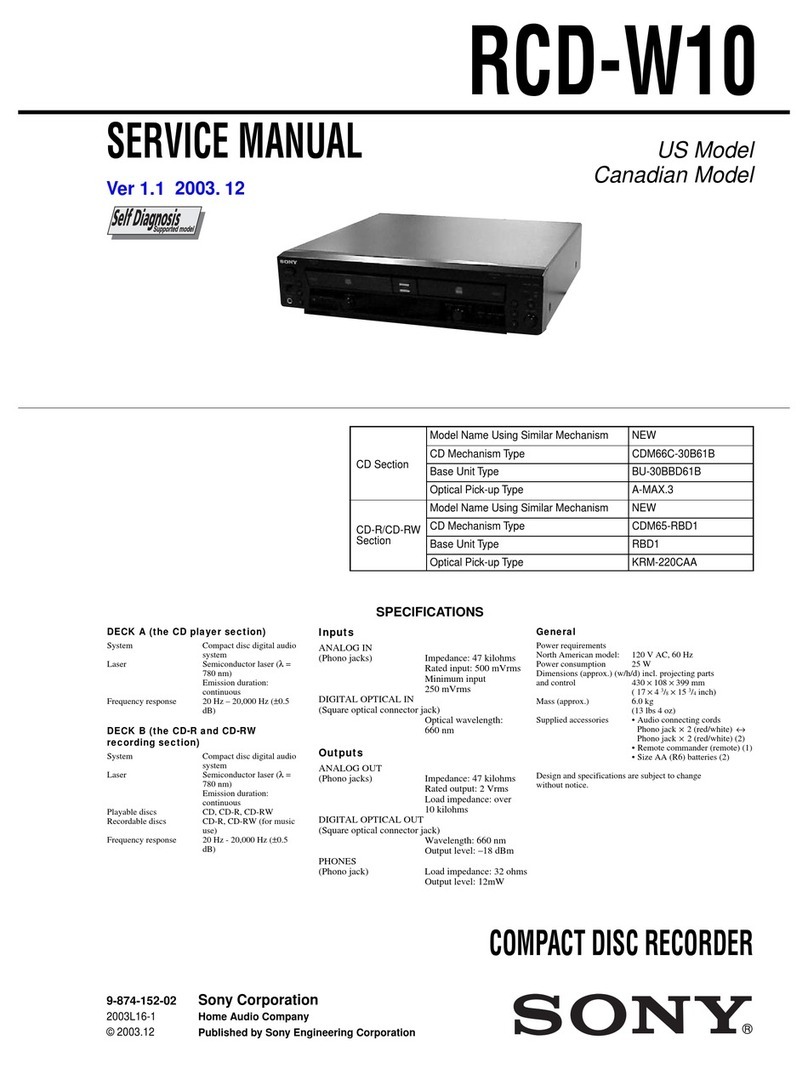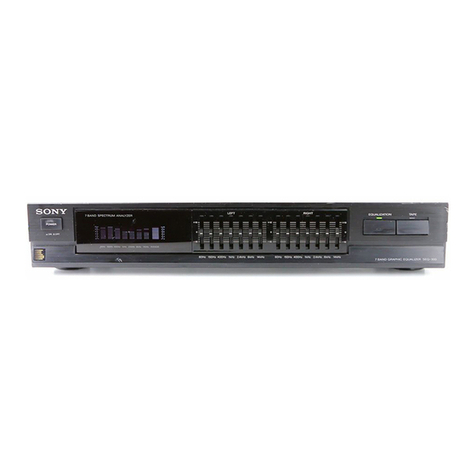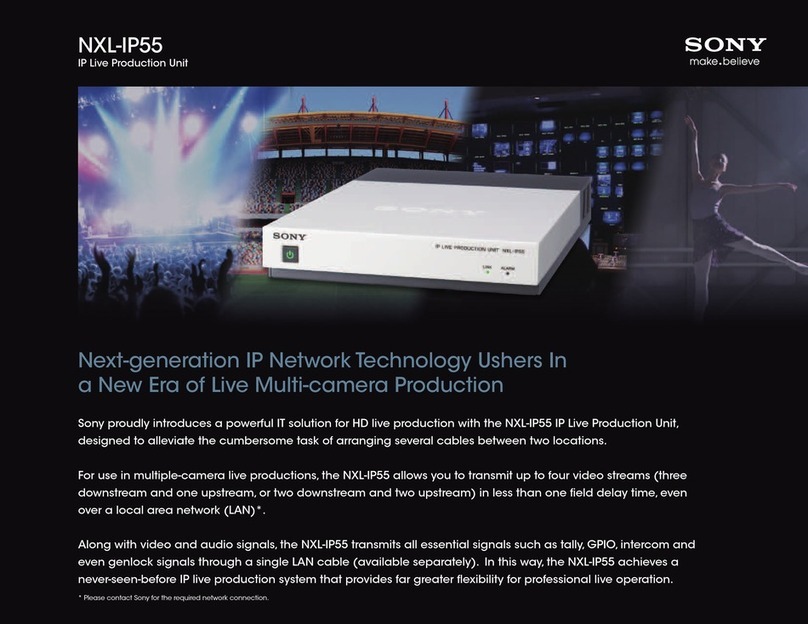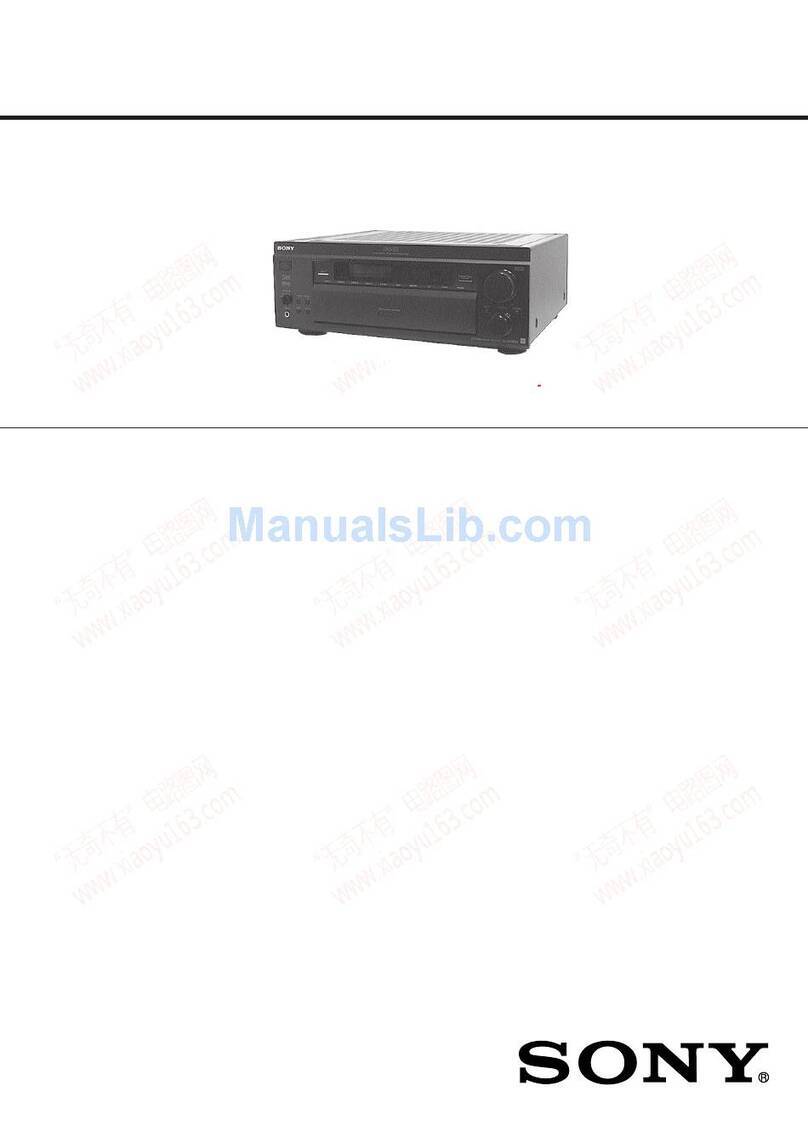
Chapter 1 Overview
81-1 Features
control signals are multiplexed into video signals
transmitted over optical-fiber cable.
Note
Power cannot be supplied to a camera from this unit by
optical-fiber cable.
SR Motion™ 1) (with optional HKSR-102
installed)
When the optional HKSR-102 Picture Cache Board is
installed, SR Motion is available on this unit. SR Motion
allows you to apply Slow & Quick Motion effects to
images by using memory on the HKSR-102. This provides
the same effects as those of overcranking and
undercranking of film cameras. It has three functions:
Select FPS, Slow Shutter, and Interval Frame.
1) SR Motion is a trademark of Sony Corporation.
Format conversion
This unit is capable of the following format conversion for
output to monitors.
• Color space conversion (4:4:4 RGB t4:2:2 YCbCr)
• 2-3 pulldown (4:2:2 23.98PsF t4:2:2 59.94i)
• Downconverter (1080i tSD 525i/625i)
•DuallinkPti conversion (1080 59.94P/50P t2-line
linearly interpolated 1080 59.94i/50i)
Removable control panel
The control panel is independent of the SRW-1 (VTR main
unit), allowing it to be installed in the most convenient
location in your operating environment. It can be held in
the hand and operated like a remote controller.
Internal timecode generator and reader
The internal timecode generator allows you to record
timecode (LTC 1) and user bit data 2)) along with the video
and audio signals. The internal timecode reader reads the
recorded timecode (LTC and user bit data) during
playback.
1) LTC (Longitudinal Time Code):
Timecode recorded on longitudinal tracks of the tape. It may not be read
correctly when the tape speed is very slow or when the tape speed changes
suddenly.
2) User bit data:
Eight-digit hexadecimal numbers which can be recorded as auxiliary
information during recording of timecode.
Independent audio level adjustment
You can adjust audio levels independently while checking
peaks on all 12 audio channels.
Self diagnostics
When an error occurs, the system performs self diagnostics
and displays the cause.
1-1-2 HDCAM-SR Format
The HDCAM-SR format exploits advances in signal
processing and magnetic recording technology to enable
HD digital recording and playback with high image and
sound quality, with functionality comparable to that of the
HDCAM format.
• Highly efficient mild data compression based on the new
MPEG-4 Studio Profile
• Powerful error correction system
• Highly reliable narrow track recoding and playback
through high-performance, high-accuracy, drum-
mounted heads.
These technologies allow extended high-definition
recording times on HDCAM-SR cassettes of the same size
as the HDCAM cassette: 40 minutes or more on S-size
HDCAM-SR cassettes.
Digital signal processing
4:2:2 component video signals or 4:4:4 RGB signals
obtained by quantization according to ITU-R709, SMPTE
274M, and BTA S-002B (SMPTE 260M) are compressed
according to the MPEG-4 Studio Profile. Audio signals are
processed uncompressed, according to the AES/EBU
format.
Bit rate reduction encoder
Component video signal data is compressed to specified
data rates by a process in which it is subjected to frame
shuffling, DCT (discrete cosine transform) or DPCM
(differential pulse code modulation), quantizing
adjustment, and variable length word encoding. This
process forms the core of the new MPEG-4 Studio Profile
compression strategy. The process uses intra-frame
compression for progressive image capture and intra-field
compression for interlaced images.
ECC encoder
An outer ECC (error correction code) is interleaved with
the compressed data, followed by inner ECC, ID data, and
sync data. The error correction system uses standard Reed-
Solomon codes.
Channel coding
Video and audio with the addition of ECC data are
recorded in the form of serial data. The HDCAM-SR
format uses a scrambled NRZI (Non-Return-to-Zero
Inverted) channel coding system to ensure superior off-
track and noise tolerance characteristics.
